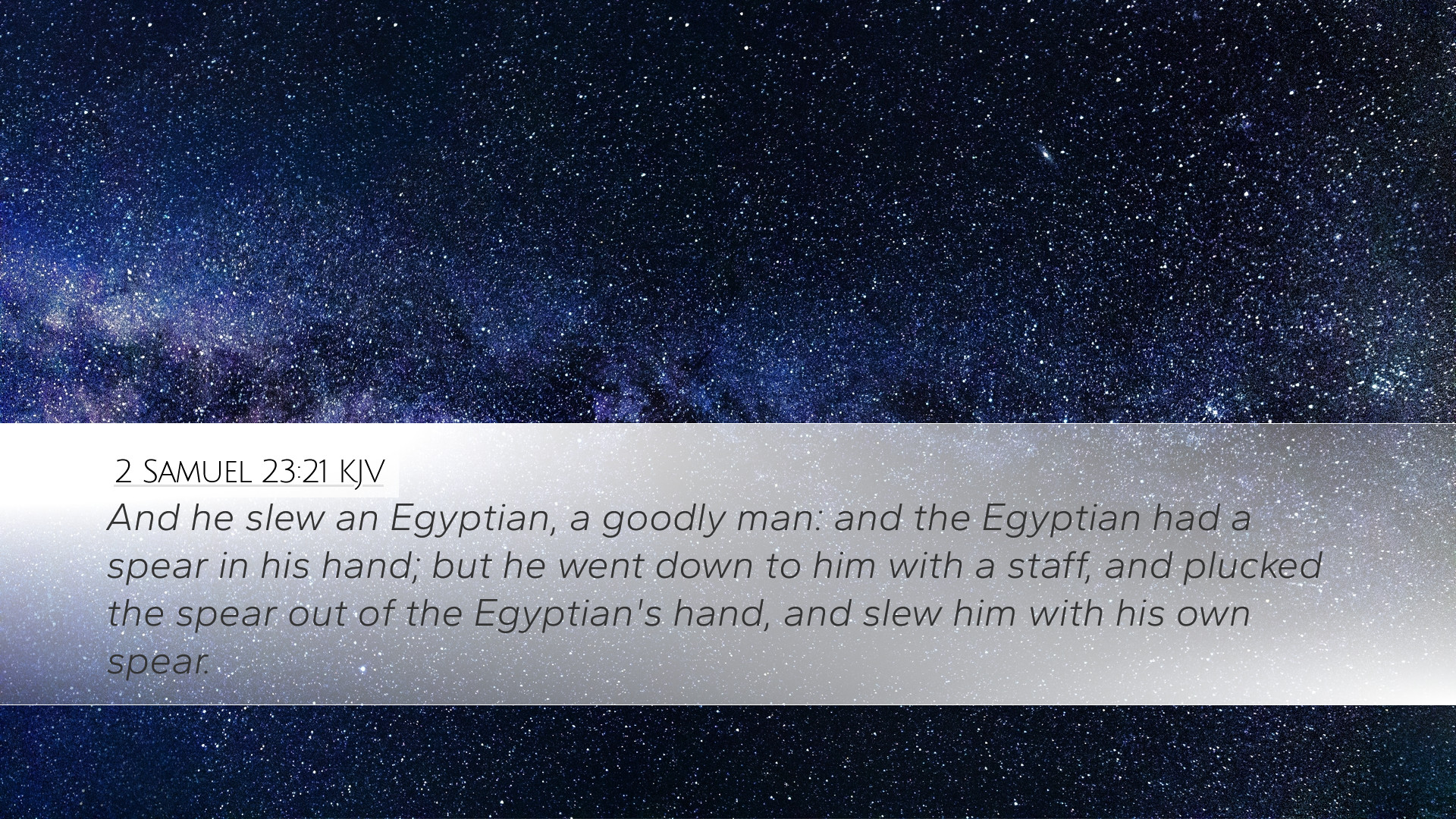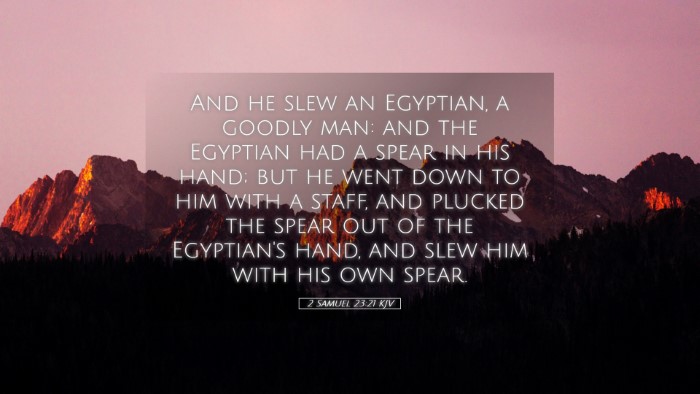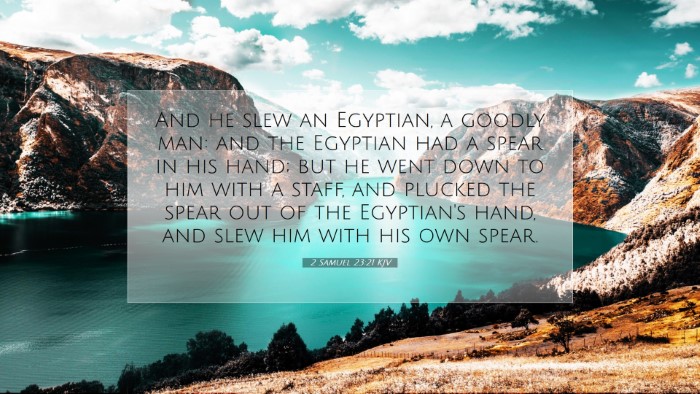Commentary on 2 Samuel 23:21
The verse in focus, 2 Samuel 23:21, reads: “And he slew an Egyptian, a goodly man: and the Egyptian had a spear in his hand; but he went down to him with a staff, and plucked the spear out of the Egyptian’s hand, and slew him with his own spear.” This verse is situated in the context of the valiant deeds of David’s mighty men, illustrating themes of courage, skill, and divine empowerment.
Overview of Context
This passage serves as part of the closing chapters of 2 Samuel, where the author highlights the exploits of David's mighty warriors. This catalogue not only honors their bravery but also reflects on God's providential hand in securing victory for Israel. The mention of the Egyptian in this specific verse brings forth a vivid image of a battle scene that encapsulates the themes of strength versus strategy.
Insights from Matthew Henry
Henry emphasizes the valor of the unnamed warrior—who is traditionally identified as Benaiah—drawing attention to his extraordinary courage. He notes that:
- Divine Assistance: The warrior's victory is not merely attributed to his physical skill but to the providence of God, empowering him in moments of peril.
- Symbol of Strength: The Egyptian is described as a “goodly man,” indicating his physical stature and fighting prowess, thus highlighting the magnitude of the Joshua-like faith displayed by this warrior.
- Strategy Over Strength: Rather than engage the Egyptian with his own spear, the warrior chooses to confront him with a staff, symbolizing reliance on God's strategy rather than solely on human strength.
Insights from Albert Barnes
Barnes comments on the specifics of this military encounter, elucidating the tactics employed by David's men. His insights include:
- Descriptive Language: The phrase “slew an Egyptian, a goodly man” suggests that this was not just a random encounter, but a deliberate act of bravery against formidable opposition.
- Use of the Enemy’s Weapon: The act of taking the spear away and using it to slay the Egyptian carries heavy significance, symbolizing the reversal of fortunes in battle—a common biblical theme wherein God turns the enemy’s strength against them.
- Implication for Believers: Barnes notes that the act serves as a reminder that believers may face overwhelming odds, yet through faith and God’s power, they can reclaim what once posed a threat and transform it for victory.
Insights from Adam Clarke
Clarke provides a rich historical and theological context for this narrative. His contributions include:
- Historical Context: Clarke identifies the Egyptian as possibly a mercenary or a foreign soldier, bringing forth the understanding of Israel's conflicts with surrounding nations during David’s reign.
- Character of Conflict: He asserts that the battle is not only physical but also spiritual, representing Israel’s struggle against oppression and the ideals of faith and trust in God amidst adversity.
- Moral Lessons: The story serves as an allegory for Christians facing life's adversities, where the act of overcoming an enemy symbolizes the triumph of good over evil through God’s intervention.
Theological Reflections
This verse invites deeper theological reflection on several key components:
- The Sovereignty of God: The victory achieved through the staff instead of traditional weapons underscores God’s ability to use unlikely means for His purposes.
- The Role of Faith in Action: The valor of the unnamed warrior showcases how faith can empower believers to act decisively in challenging situations, demonstrating reliance on God’s strength.
- Transformation of Evil to Good: The use of the Egyptian's spear speaks to the biblical principle of God reversing situations for His glory. It serves as a powerful reminder that God can take what was meant for harm and turn it into a means for victory.
Conclusion
In summation, 2 Samuel 23:21 presents a multifaceted narrative rich with implications for personal faith, communal strength, and the overarching narrative of God’s deliverance. The actions of the warrior not only commend personal resolve but also serve to remind believers of God’s continual presence in their struggles. This commentary aims to serve pastors, students, theologians, and scholars as they reflect on the depth of this passage and its enduring truths applicable to modern life.


